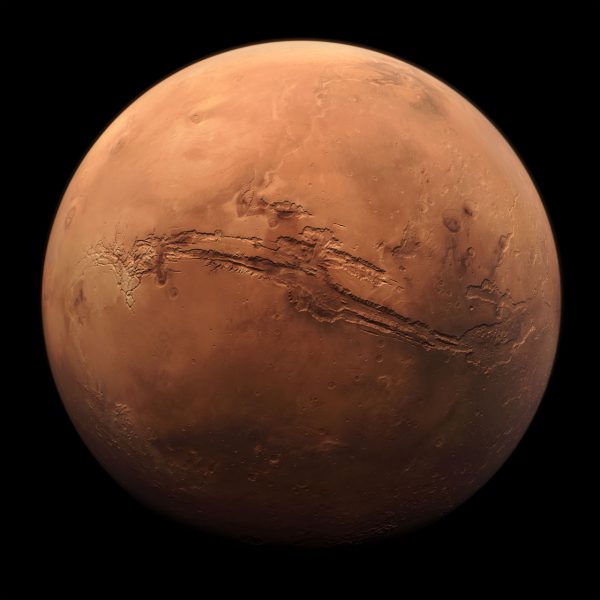
This winter our skies had a visit from Mars, one of our inner solar system neighbours. Even a casual glance towards the East in the evening showed a bright and vivid orange-red star outshining even Jupiter. Normally, Mars is a slight let-down looking through the telescope: not much more than a small orange ball with no features. However, this year we could add this fascinating planet to our viewing list, with features such as the polar ice caps and surface colour variations easily visible.
“… a casual glance towards the East in the evening showed a bright and vivid orange-red star outshining even Jupiter.”
Why is Mars so “mercurial” with its brightness? One main reason is due to its slightly unusual orbit compared to Earth. As Tycho, Kepler and Newton painstakingly worked out, the planets orbit in ellipses—not circles—around the Sun, so the planet’s distance to the Sun can change. Earth’s orbit is close to circular; its distance to the Sun varies by 5 million kilometres during the year. Mars, however, has a much larger variety of about 43 million kilometres! So when the Sun, Earth, and Mars form a line—known as opposition—Mars could be as close as 60 million kilometres or as far away as 100 million kilometres.
So how often does Mars put on its show? During their orbits, Earth and Mars enter opposition every 2.1 years (give or take a month). Each opposition is about 50 degrees further on from the previous opposition, so every 15-17 years, Earth and Mars are in opposition when Mars is at its closest to the Sun. This is when the Red Planet really does “assume the port of Mars”.
The next opposition in 2020 will be less bright than this year’s, but still very prominent. Thereafter, Mars will become rapidly dimmer with each opposition until 2031 and 2033 when it will approach the brilliance we have seen this year. If you’d like to see Mars at its best, better visit us soon!





